
Stem bundle nests for bees
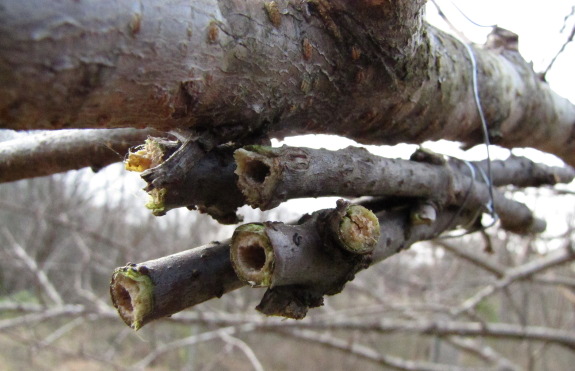
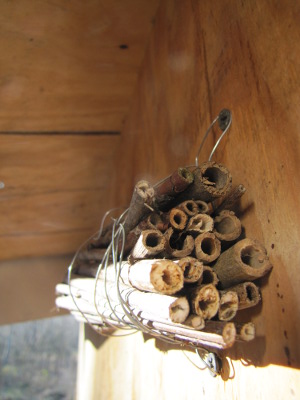 Although you may be heartily
sick of reading about bee nests after my firewood
bee nest post and my post
about "small bee towns", I was still gungho and
wanted to try another technique. Stem bundles are probably the
easiest type of bee nest you can build, and they may be more effective
than my wood block nests since the insides of hollow stems are
naturally smooth and conducive to bees.
Although you may be heartily
sick of reading about bee nests after my firewood
bee nest post and my post
about "small bee towns", I was still gungho and
wanted to try another technique. Stem bundles are probably the
easiest type of bee nest you can build, and they may be more effective
than my wood block nests since the insides of hollow stems are
naturally smooth and conducive to bees.
To make a bamboo stem
bundle, cut bamboo into sections just below the node so that each piece
has one long tube that's naturally blocked off at the bottom. If
you don't have bamboo, you can use hollow-stemed weeds as long as you
find a way to plug the far end --- I'm trying a bit of mud and ashes,
as you can see in the photo below.
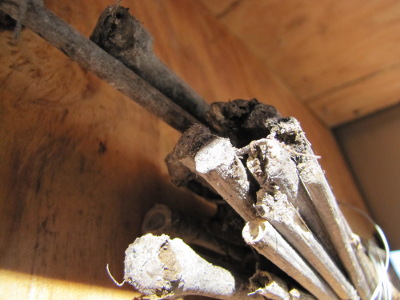 As
with wooden blocks, you'll need to decide whether you want to combine
just a few stems together for a no-maintenance stem bundle or make
larger nests that will need some care. If you choose the latter,
you can make a very pretty stem bundle by stuffing cut stems into
coffee cans, plastic buckets, or short pieces of PVC pipe. With
just a few stems, though, it's simpler to tie the twigs together with a
piece of wire or string.
As
with wooden blocks, you'll need to decide whether you want to combine
just a few stems together for a no-maintenance stem bundle or make
larger nests that will need some care. If you choose the latter,
you can make a very pretty stem bundle by stuffing cut stems into
coffee cans, plastic buckets, or short pieces of PVC pipe. With
just a few stems, though, it's simpler to tie the twigs together with a
piece of wire or string.
If you don't have any
bamboo or hollow weeds on hand, you can drill out the centers of 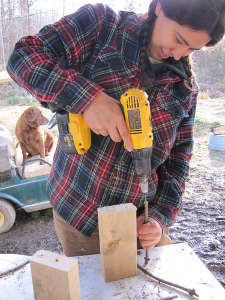 pithy twigs to get the same
effect. Elderberry, sumac, and chinaberry twigs are supposed to
work well --- I'm trying elderberry.
pithy twigs to get the same
effect. Elderberry, sumac, and chinaberry twigs are supposed to
work well --- I'm trying elderberry.
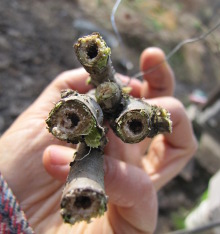
I hung one stem bundle
on the side of our wood stove addition on the south face of the trailer
and another under a limb in the kitchen peach tree. Now I just
need to wait and see which, if any, of my artificial nests catch the
fancy of our wild bees this spring and summer.
Want more in-depth information? Browse through our books.
Or explore more posts by date or by subject.
About us: Anna Hess and Mark Hamilton spent over a decade living self-sufficiently in the mountains of Virginia before moving north to start over from scratch in the foothills of Ohio. They've experimented with permaculture, no-till gardening, trailersteading, home-based microbusinesses and much more, writing about their adventures in both blogs and books.
Want to be notified when new comments are posted on this page? Click on the RSS button after you add a comment to subscribe to the comment feed, or simply check the box beside "email replies to me" while writing your comment.
- Remove comment
- Remove comment
